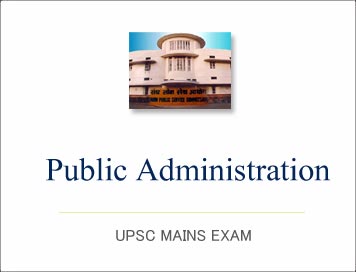
Sample Material of Current Public Administration Magazine
1. Accountability and Responsibility
The Solicitor General’s outburst
When the Supreme Court took up suo motu the plight of migrant labourers, the
country’s Solicitor General Tushar Mehta claimed that the Centre is doing a lot
to address the situation created by the COVID-19 pandemic. In a rare display of
combativeness, he described those who contested his claim as prophets of doom.
He alleged that these critics were spreading “negativity, negativity, and
negativity”. Mehta urged the court to call upon such persons to prove their
credentials by filing affidavits disclosing their contribution towards easing
the crisis. He also took potshots at journalists reminding the Court of a
photographer who went to Sudan where he photographed a vulture and a
panic-stricken child; the photograph earned him the Pulitzer prize, but within
days of receiving the honour, the photographer committed suicide because he
suffered from the guilt of having preferred photography to rescuing the
beleaguered child.
Simply put, Mehta’s outburst tantamounts to asking the media, or for that
matter any public-spirited person or a group of persons, to refrain from
highlighting the plight of the migrants who have been forced to walk on foot for
hundreds — even thousands — of kilometres without food and water and without a
penny in their pockets in a desperate attempt to be with their loved ones. Such
reporting, in the Solicitor General’s view, spreads negativity. Mehta is
reported to have clarified that his remarks were not directed against the media
but the context in which he spoke did imply that he was referring to the media.
CLICK HERE FOR FULL ARTICLE (Only for Course Members)
2. Indian Government and Politics
Judiciary should not unwittingly lend its shoulders for somebody else’s gun
to rest and fire
In a democracy, sovereign power of the state rests on three pillars —
legislature, executive and judiciary. Well-defined boundaries prevent
encroachment by one into the area of the other. The judiciary is the trustee of
democracy and fundamental rights of the people. It has the power of judicial
review over the legislature and the executive.
The Supreme Court, in the Eighties, devised Public Interest Litigation
methodology, relaxing the rule of locus standi, if a case for the Court’s
intervention is made out, in particular, where the fundamental rights of
poverty-stricken, disabled, downtrodden or hapless are involved. The
constitutional courts have also commenced taking suo motu cognisance of such
facts, as impelling them to act if the fundamental rights of such people run the
risk of being lost or irreparably damaged.
CLICK HERE FOR FULL ARTICLE (Only for Course Members)
3. Significant Issues in Indian Administration
MGNREGA in need
A record 4.89 crore persons belonging to 3.44 crore households sought work
under the Mahatma Gandhi National Rural Employment Guarantee Act (MGNREGA) in
May. This is against 3.18 crore persons from 2.26 crore households for the same
month last year, when large parts of India were experiencing drought-like
conditions. The current surge in MGNREGA work demand reflects a drought, not of
water, but of jobs and incomes. And it seems to be coming mainly from migrant
workers returning to their villages from cities and industrial centres post the
COVID lockdown. Proof of it is the states where the number of households
registering demand has shown the highest increase: Uttar Pradesh (299.3 per cent
in May 2020 over May 2019), West Bengal (214.5 per cent), Odisha (113.5 per
cent), Chhattisgarh (68.9 per cent), Madhya Pradesh (65.1 per cent) and Bihar
(62.1 per cent). These are all labour exporting states. What’s now being seen is
an extraordinary phenomenon of distress reverse migration from city to village.
The lockdown hasn’t hit the rural economy, more so agriculture, that badly.
CLICK HERE FOR FULL ARTICLE (Only for Course Members)
4. Current Topic
When poverty became visible
The greatest comfort for the privileged citizens of India is that the poor
and their misery are invisible. Ensconced as they are in a world of the visible,
to them what is not visible does not exist. It is enough that their part of
India is shining. But a time comes when this changes in an alarming way. That
time has now come, and it is called COVID-19.
This crisis has torn apart a façade. The stark reality is now to be seen
everywhere. Migrant labourers moving — like hordes of refugees in their own land
— across states, walking hundreds of kilometres in near-death desperation. A few
perished out of exhaustion. Dozens got crushed in street accidents. And when the
situation apparently improved, dead bodies were found inside Shramik Special
trains that were ferrying them like cattle to their home states. A little child
was found trying to wake up his mother, who lay dead on the platform. But who
will wake up the calloused conscience of a nation that has become blind to human
suffering in its obsession with the politics of profit and the profit of
politics?
CLICK HERE FOR FULL ARTICLE (Only for Course Members)
5. Financial Administration
Self-reliance is about resilience and decentralisation, not isolationism
In recent weeks, Prime Minister Narendra Modi delivered two important
speeches outlining his long-term vision for the economy. The first speech was
part of the context-setting for the stimulus package subsequently announced by
Finance Minister Nirmala Sitharaman. The second speech was an address to the
annual session of Confederation of Indian Industry. In both cases, the Prime
Minister emphasised the idea of “Atmanirbhar Bharat” (self-reliant India). But,
what does Atmanirbhar Bharat really mean? How does it fit with the reforms being
currently announced? What does it imply for future policy?
It is important, at the very onset, to clarify that this idea of
self-reliance is not about a return to Nehruvian import substitution or autarkic
isolationism. The prime minister emphasised that his vision includes active
participation in post-COVID global supply chains as well as the need to attract
foreign direct investment.
CLICK HERE FOR FULL ARTICLE (Only for Course Members)



